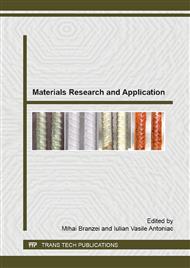p.76
p.81
p.86
p.92
p.100
p.112
p.121
p.129
p.135
World Crisis of Rare Earth – Inoculants Enhancer Solution for Ductile Iron Production
Abstract:
The unique properties of rare earth elements (REE) have resulted in their being crucial to a growing number of emerging technologies. As the demand for REE currently exceeds annual production, the present worldwide crisis for REE will probably continue for the foreseeable future. Hence, it is highly likely that the availability of REE used in the metallurgy of cast iron will be significantly reduced and alternatives to REE usage may have to be developed. Graphite nodules nucleate heterogeneously on particles formed in the melt, having a duplex structure (sulphide as a core and oxide/silicate as a shell). Mg, Ca and REE appear to act in the nucleation first stage, while Si, Al, Mg, REE, Ca, Sr and Ba act predominately in the second stage. Generally, REE are employed in ductile irons to accomplish the following tasks: (a) neutralize tramp elements such as Ti, Pb, Bi, As etc; (b) assist in nodulizing or provide a supplementary effect to Mg to promote spheroidal graphite shapes; (c) assist in nucleating graphite. When anti-nodularising Thielman control factors (K) are less than 0.8, REE are usually not required since there are no trace elements to neutralize. REE are useful for K factors between 0.80 to 1.20 and are mandatory for K factors greater than 1.20. Theilman factors greater than 2.0 will always require REE. When Theilman factors are less than 0.80, REE res levels of 0.01% are usually more than sufficient for ductile iron production. Three ductile iron inoculation alloys were selected for this research: (a) a conventional Ca bearing 75% FeSi inoculant (Ca-FeSi), used at a high consumption level; (b) an improved conventional Ca-FeSi alloy that incorporated active inoculating elements, such as Ba or REE, used at a medium consumption level, and (c) a combination of a commercial inoculant, such as Ca-FeSi alloy, used with a separate oxy-sulphide inoculant enhancer alloy addition. The last inoculation variant provided the best structural parameters and the lowest consumption level.
Info:
Periodical:
Pages:
100-111
Citation:
Online since:
July 2015
Keywords:
Price:
Сopyright:
© 2015 Trans Tech Publications Ltd. All Rights Reserved
Share:
Citation:


